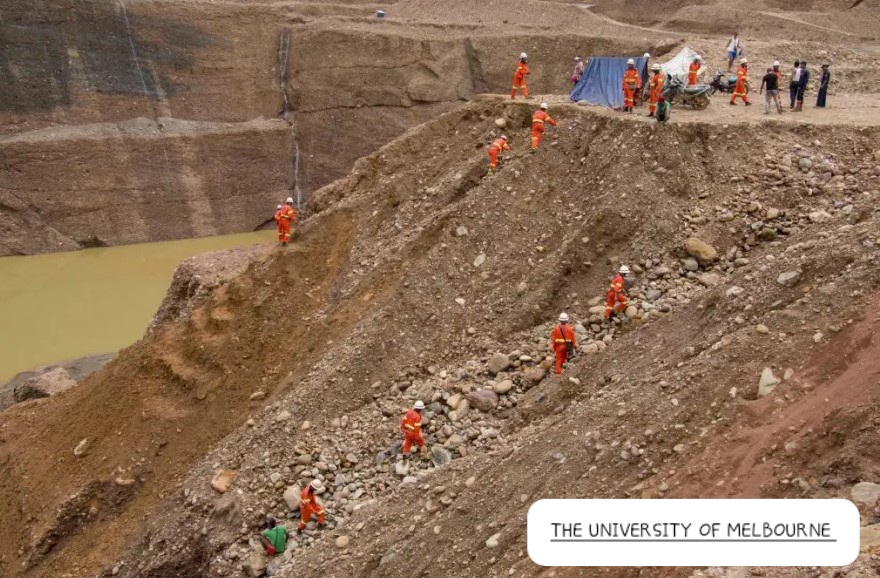
EDUCAST, Researchers from University of Melbourne are helping villagers in Nepal predict when treacherous landslides are about to overwhelm their homes.

Scientists from the University of Melbourne, Tribhuvan University in Nepal and the University of Florence have teamed up with the Government of Nepal and Australia’s Department of Foreign Affairs and Trade to deliver a new state-of-the-art artificial intelligence system that can analyses the significant amount of data needed to identify when rain-soaked ground is about to give-way.
The forecasting system, called SAFE-RISCCS, continuously analyses satellite images of Earth taken by NASA, the European Space Agency and the Japan Aerospace Exploration Agency. Feeding SAFE-RISCCS forecasts’ into Landslide Early Warning Systems will protect people living in the shadow of landslides, ensuring alerts will be far more accurate, either days or even weeks in advance.
University of Melbourne scientist Professor Antoinette Tordesillas, who is leading the project, said about 59 per cent of Nepal was prone to landslides and had one of the world’s highest deaths per capita due to landslides.
“More than 80 per cent of the land in Nepal is on a slope and much of the country was destabilized during the 2015 Gorkha earthquake. With the monsoons due in June, we are helping policymakers and risk managers better prepare for future monsoons when increasingly frequent and heavy rains are expected to trigger more devastating landslides,” Professor Tordesillas said.
“Climate change and growing human activities pose a significant threat to communities in Nepal. Women, children, the elderly, and the disabled are especially vulnerable during disasters. Early warning systems are crucial because they give public officials more lead time to better plan, prepare and protect communities before the hazard strikes,” she said.
“It’s like watching the water wash away sandcastles at the beach; one minute a village is there and the next it is gone. Ground motion holds clues to when a slope is about to slide. Our job is to help develop reliable early warning systems through better forecasting tools that can read these clues and predict landslide hazards as early as possible.”
The SAFE-RISCCS platform uses images from space, combined with a new open-access artificial intelligence tool invented at the University of Melbourne, to combine rain measurements and ever-changing ground motion data to continuously monitor and forecast the risk of a landslide at any one time in any one place.
SAFE-RISCCS will be rolled out in two high-risk regions in partnership with Nepal’s National Disaster Risk Reduction and Management Authority, as part of a new Landslide Early Warning System being developed in Nepal.
On 25 April 2015 the 7.8 magnitude Gorkha earthquake struck Nepal near the capital Kathmandu, triggering avalanches on Mt Everest and in the Langtang Valley and about 45,000 other landslides that destroyed parts of the city and wiped out thousands of villages.
Professor Basanta Adhikari from Tribhuvan University said continuous monitoring of deformations in the surface was vital in protecting the people of Nepal.
“The increasing occurrences of landslides in the Nepal Himalayas, driven by the coupling effect of seismotectonic activities and climate change alongside human-made factors such as haphazard road construction, highlight the vulnerability of mountain communities,” Professor Adhikari said.
Professor Emanuele Intrieri from Florence University said raising awareness was the most effective way to reduce risk.
“Recent developments in remote sensing allow us to monitor ground displacements from satellites with increasing sensitivity. Raising people’s awareness about the risk affecting the area they are living in remains the most cost-effective solution to reduce the exposure,” Professor Intrieri said.
“Nepal is only one of several regions in the Asia-Pacific at risk of worsening natural disasters associated with climate change. By improving early landslide prediction globally, we reduce the risk of catastrophic events and so protect human life, people’s livelihoods, critical infrastructure and the environment,” Professor Tordesillas said.
Write your comment